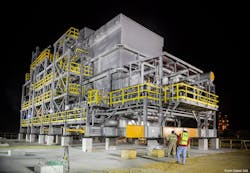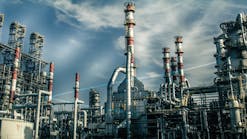Costs have risen and startup schedules have been extended for Sasol Ltd.’s integrated ethane cracker and downstream derivatives complex under construction in Westlake, La., near Lake Charles (OGJ Online, July 15, 2013).
Preliminary findings from a detailed review of the Lake Charles Chemicals Project (LCCP) that began in March indicate total capital expenditures for the project, including site infrastructure and utility improvements, could increase to as much as $11 billion from a previous estimate of $8.9 billion, Sasol said.
The company attributed rising capex for LCCP to the interplay of several factors, including:
• Construction delays caused by higher-than-expected rainfall in the region.
• Higher labor costs.
• Increased prices under certain lump-sum contract bids.
• Bulk material requirements in excess of those included in original project estimates.
A policy to decelerate capital spending until June 2018 as part of Sasol’s low oil-price response plan (OGJ Online, Mar. 9, 2015) also has contributed to further project cost increases as well as resulted in an extended project schedule for LCCP, the company said.
While improved phasing of engineering and construction activities have helped to partially offset some of these higher costs, Sasol said changes in long-term price assumptions and higher capital estimates have weighed on anticipated returns for the project compared with the company’s projected returns upon reaching final investment decision for LCCP in October 2014 (OGJ Online, Oct. 27, 2014).
Despite cost overruns and extended deadlines, however, the company said it has not altered the scope of its originally proposed project.
As of Apr. 30, Sasol’s capex to date on LCCP is $4.5 billion, with the overall project now more than 40% completed.
Currently, Sasol said it expects LCCP’s 1.5 million-tonne/year ethane cracker will achieve beneficial operation during second-half 2018, which will enable about 80% total output from LCCP to reach beneficial operation later in 2018 and early 2019.
Additional production from LCCP’s other derivative units will reach beneficial operation by second-half 2019, the company said.
Still ongoing, Sasol’s detailed review of LCCP is due to be completed during this year’s third quarter.
Sasol said it will release further details regarding the review with the company’s annual results announcement on Sept. 12.
Alongside the grassroots ethane cracker (OGJ Online, Nov. 3, 2014; Oct. 16, 2013), LCCP will include six downstream chemical plants, including two large polymers plants for production of low-density and linear low-density polyethylene (OGJ Online, Oct. 15, 2015; Dec. 4, 2014) as well as an ethylene oxide-ethylene glycol plant that, together, will use about two thirds of ethylene produced by the cracker as feedstock.
The complex also will house three smaller, higher-value derivative plants to produce specialty alcohols, ethoxylates, and other products.
Contact Robert Brelsford at [email protected].

